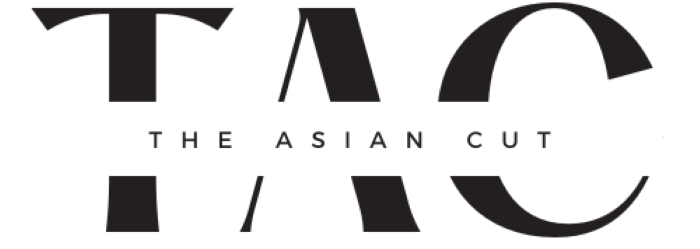Playing a serene and stylish, California-based artist on A24 and Netflix’s newest hit show BEEF, it seems like Joseph Lee was born to play George Nakai.
As the partner of Ali Wong’s character Amy Lau, George seems like the perfect trophy husband: tall, handsome, supportive, cultured, and from a prestigious family (his deceased father is a renowned furniture designer, and his mother, played by Patti Yasutake, is a Rei Kawakubo-like muse). Yet, Amy and George’s marriage is far from the idyllic, progressive, West Coast ideal that they hope to embody, and over the course of the ten-episode limited series, irreconcilable differences begin to show.
Like his BEEF character, Lee is also a successful visual artist. He has lately been gaining recognition with roles on the TV series Star Trek: Picard and in the 2018 thriller Searching opposite John Cho. I spoke with the actor and artist over the phone where we discussed the overlap between George and himself as well as interacting with another Korean-American artist-actor on the show, David Choe.

This interview has been edited for brevity and clarity.
The Asian Cut: How did you get involved with BEEF? What was your first meeting with Lee Sung Jin [also known as Sonny to his friends and colleagues] like?
Joseph Lee: It was actually kind of interesting. I filmed my audition tape, and then I heard back within the next few weeks, and then that lingered into the next producers’ session. I got on a Zoom call with Sonny and some of the producers and that went well. Then we went into our [chemistry] reads and that was where I feel like the magic got cemented because it was my first time being able to work with Ali [Wong] in person.
There was just a very natural rapport there. We were able to improv, and Sonny would give incredible notes and directions for things that he wanted to see. It was a really fun experience. And then a couple weeks went by, I didn’t hear anything. I thought, “Okay, well, I gave it a good shot.” Somehow, it all came back around.
You’re an artist, and your character George is also an artist. Was that purely a coincidence or did you have some input for your character?
No, Sonny had created the character already. They had seen a bunch of tapes, and, from what I hear, my tape went to Ali. She actually is a collector of mine, and so she immediately saw my face and said, “Oh, wait. This guy is actually an artist.” From there, we had our [chemistry] read, and everything worked out.
That’s pretty cool. You don’t often get to see that sort of Asian character on screen who’s an art-world type. Your character is not only an artist, but his father is also a sculptor and his mother is a creative muse. How was it representing that, and did you have any real life inspirations for your performance?
No. I mean, to be honest, I think when I’m working, I don’t really view it through the lens of putting that type of weight on my shoulders in terms of, “Am I representing an entire community?” I think you have to focus on the task at hand and make it as authentic and true to you as you can. But I was definitely aware of the project that I’m working [on], and obviously it’s an incredible project to be a part of.
In terms of inspirations, I didn’t really use any specific examples, but I spent a lot of time thinking about my own childhood because I feel like a lot of those childhood impulses I see in George — he just has this kind of purity for the things that he loves when it comes to his art and his family. I spent a lot of time getting back to that place where I could be joyous and be purely happy and allow it to be unfiltered. I think that’s where the bulk of how I was able to create George in my mind.
That’s fair. I had a question about the art pieces themselves. Who actually made those for the show?
We have this incredible production designer, Grace Yun, who not only created George’s sculptures, but she designed George’s house, Danny’s apartment, every meticulous detail from scratch in a studio lot. It was having all of those external pieces laid out that really allowed us to jump right into character and really feel it out as soon as we got on the set.
You are not the only visual artist on the show, but David Choe is as well. Did you ever have a chance to chat with him about being both artists?
[Laughs] Yes and no. First of all, I grew up watching his videos on YouTube in Indiana and being completely mystified [by] who this person was. This is somebody that really transcended any type of label or genre that you could really put on him. And, to be honest, just to call him an artist feels kind of cheap because I feel like he’s so much more than any type of label. He’s really this creative force of energy. Although we didn’t share any scenes together, it was lovely spending time with him on set. I think what most people might not know is he’s a really lovely guy. He has a really big heart, and I had a really enjoyable time chatting with him, having small talk, and being around the guy. He’s fantastic on the show.
Back to your character, George. He’s Japanese-American, and, throughout the show, he faces some microaggressions from both white characters and East Asian characters. I’m thinking of when Maria Bello’s character Jordan insists on calling him “Joji,” or when Ali Wong’s character says, “Someone didn’t like that you were Japanese.” Can you talk a little bit about those moments and how your character reacts?
If you are Asian, you know exactly what that means. It kind of goes to the boldness of Sonny to include all of these little details [to] fully flesh out these characters. There’s so many details within the scripts that I think only 10% of the population might understand, but that’s what it’s about. It’s about purely creating these authentic life forms.
If you are Asian-American, those types of jokes [are] a part of our dialogue.
Those are the conversations and little jabs and quirks that we grew up with. I think it was important to include that within the natural banter of how we talk.
















